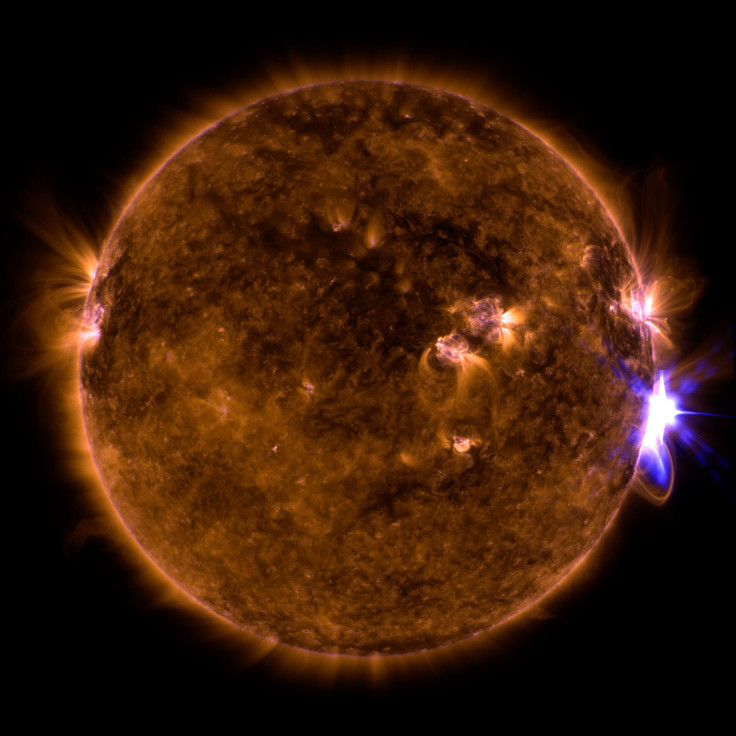Sun Erupts With Most Intense Solar Flares Of Its Cycle

The sun is moving toward a low point in its activity cycle, but these solar flares didn’t get the message. NASA has released new footage of eruptions that took place over the last several days, including a solar flare that is the most intense one in years.
Between all the solar flares and coronal mass ejections shooting out of the sun since the beginning the month sending radiation and charged particles toward Earth, the National Oceanic and Atmospheric Administration’s Space Weather Prediction Center has put geomagnetic storm warnings in place, anticipating how it would interact with the magnetic field around our planet. The most recent warning predicts a moderate geomagnetic storm for Wednesday and a minor one for Thursday — ranked a G2 and a G1, on a scale where G5 is the strongest.
When charged particles from the sun are blown toward Earth, they could interfere with satellites that are crucial for GPS systems, communications and power grids. In a more visual way, they can create auroras, the colorful displays in the sky that are also known as northern lights, because of the way they interact with both the magnetic field and gases in our atmosphere.
The particles and solar radiation may also hamper radio signals.
The new geomagnetic storm warning comes a few days after a strong solar flare temporarily knocked out radio communications. The flare was an X-class flare, the most intense variety. It was specifically labeled and X8.2, in which the number indicates strength within the flare class. During the flare, NASA’s Solar Dynamics Observatory was slapped with particles from the sun, causing static in its feed.
Although an X8.2 is a powerful flare, it wasn’t the strongest one released in the last week. On Sept. 6, a flare rated X2.2 erupted shortly after 5 a.m. and another ranked X9.3 showed up just three hours later. The SDO captured footage of both flares.

It happened two days after another flare, a weaker one in the mid-level class, rated as an M5.5 flare. M-class is a 10th of the intensity of X-class.
There were also mid-level flares on Sept. 7 and 8.
“The X9.3 flare was the largest flare so far in the current solar cycle, the approximately 11-year cycle during which the sun’s activity waxes and wanes,” NASA said. “The current solar cycle began in December 2008, and is now decreasing in intensity and heading toward solar minimum. This is a phase when such eruptions on the sun are increasingly rare, but history has shown that they can nonetheless be intense.”
Shortly after those flares erupted, as well as other coronal mass ejections, the Space Weather Prediction Center had warned of an incoming strong geomagnetic storm, ranked a G3, that was expected to interfere with radio communications and create extra drag on satellites in low-Earth orbit, possibly causing technicians to maneuver and reorient them.
The radiation from a solar flare does not make it through Earth’s atmosphere to do harm to humans or other living things.
© Copyright IBTimes 2024. All rights reserved.











